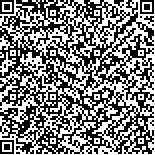| 引用本文: |
李富周,贺春香,余婧萍,宋祯彦,李平,成绍武.当归芍药散改善APPswe/PS1ΔE9转基因小鼠学习记忆能力及机制研究[J].湖南中医药大学学报,2020,40(9):1094-1100[点击复制] |
|
| |
|
|
| 本文已被:浏览 2285次 下载 554次 |
| 当归芍药散改善APPswe/PS1ΔE9转基因小鼠学习记忆能力及机制研究 |
| 李富周,贺春香,余婧萍,宋祯彦,李平,成绍武 |
| (湖南中医药大学, 湖南 长沙 410208;中西医结合心脑疾病防治湖南省重点实验室, 湖南 长沙 410208) |
| 摘要: |
| 目的 探讨当归芍药散(Danggui Shaoyao San,DSS)改善APPswe/PS1ΔE9双转基因(APP/PS1)小鼠学习记忆能力及机制研究。方法 30只APP/PS1小鼠随机分为模型组、药物组和阳性对照组,每组10只;C57BL/6野生型小鼠10只作为正常对照组。药物组予以当归芍药散水提液灌胃干预30 d[含生药剂量26 g/(kg·d)],阳性对照组予以腹腔注射法尼基转移酶抑制剂[FTI-277,25 mg/(kg·d)],模型组和正常对照组予以同等剂量的生理盐水灌胃;采用Morris水迷宫实验检测小鼠学习记忆能力;免疫组化和免疫荧光技术分别检测海马区域β-淀粉样蛋白(β-amyloid protein,Aβ)的水平及Aβ斑块沉积数量;qPCR法检测尼基转移酶mRNA表达水平。结果 与正常对照组比较,模型组小鼠呈现学习记忆功能障碍,药物组干预可改善其学习记忆能力,表现为逃避潜伏期缩短和隐藏平台穿越次数增加(P<0.05);同时,DSS能有效地减少模型小鼠脑内海马区Aβ的水平和斑块数量(P<0.05);模型组法尼基转移酶mRNA表达水平较正常组高(P<0.05),DSS干预能下调其水平。结论 当归芍药散可抑制APP/PS1小鼠脑内Aβ纤维斑块,同时可明显改善其学习记忆及认知能力。初步研究其机制,发现可能与调节蛋白法尼基修饰水平有关。 |
| 关键词: 当归芍药散 认知功能障碍 蛋白法尼基修饰 β-淀粉样蛋白 |
| DOI:10.3969/j.issn.1674-070X.2020.09.010 |
| 投稿时间:2020-04-07 |
| 基金项目:国家自然科学基金面上项目(81774129);湖南省自然科学基金面上项目(2018JJ2296,2019JJ50441);湖南省中医药管理局科研项目(2018025);湖南省教育厅优秀青年科研项目(18B246)。 |
|
| Study on Danggui Shaoyao San Improves Learning and Memory Ability of APPswe/PS1ΔE9 Transgenic Mice and Its Mechanism |
| LI Fuzhou,HE Chunxiang,YU Jingping,SONG Zhenyan,LI Ping,CHENG Shaowu |
| (Hunan University of Chinese Medicine, Changsha, Hunan 410208, China;Key Laboratory of Hunan Province for Integrated Traditional Chinese and Westem Medicine on Prevention and Treatment of Cardio-Cerebral Diseases, Changsha, Hunan 410208, China) |
| Abstract: |
| Objective To investigate the effects of Danggui-Shaoyao-San (DSS) on improving the learning and memory ability in APPswe/PS1ΔE9 double transgenic (APP/PS1) mice and its mechanism. Methods A total of 30 (APP/PS1) mice were randomly divided into a model group, a drug group and a positive control group, with 10 mice in each group, and 10 C57BL/6 wild-type mice served as normal control group. The drug group mice were treated with DSS water extract by gavage for 30 days (containing a dose of crude drug 26 g/(kg·d)). The positive control group mice were given intraperitoneal injection of farnesyltransferase inhibitor (FTI-277, 25 mg/(kg·d)). The model group and the normal control group mice were administrated the same dose of normal saline by means of intragastric administration. The learning and memory ability of the mice were evaluated by Morris Water Maze test. The β-amyloid protein Aβ levels and Aβ plaque deposition were detected by immunohistochemistry and immunofluorescence. Farnesyltransferase (FT) mRNA expression was detected by qPCR. Results Compared with the normal control group, the mice in model group showed learning and memory dysfunction. DSS intervention could improve their learning and memory ability, which was manifested by shortening the escape latency and increasing the number of hidden platform crossing (P<0.05). Simultaneously, DSS could effectively reduce the level of Aβ and the number of plaques in the hippocampus of APP/PS1 mice (P<0.05). Moreover, the farnesyltransferase mRNA level in the model group was higher than that in the normal group (P<0.05), which could be down regulated by DSS intervention. Conclusion DSS could inhibit Aβ plaques in the brain of APP/PS1 mice, and significantly improve the learning, memory and recognition ability. The initial study on its mechanism found that it may be related to the modification level of protein farnesylation. |
| Key words: Danggui-Shaoyao-San cognitive dysfunction protein farnesylation β-amyloid |
|

二维码(扫一下试试看!) |
|
|
|
|




